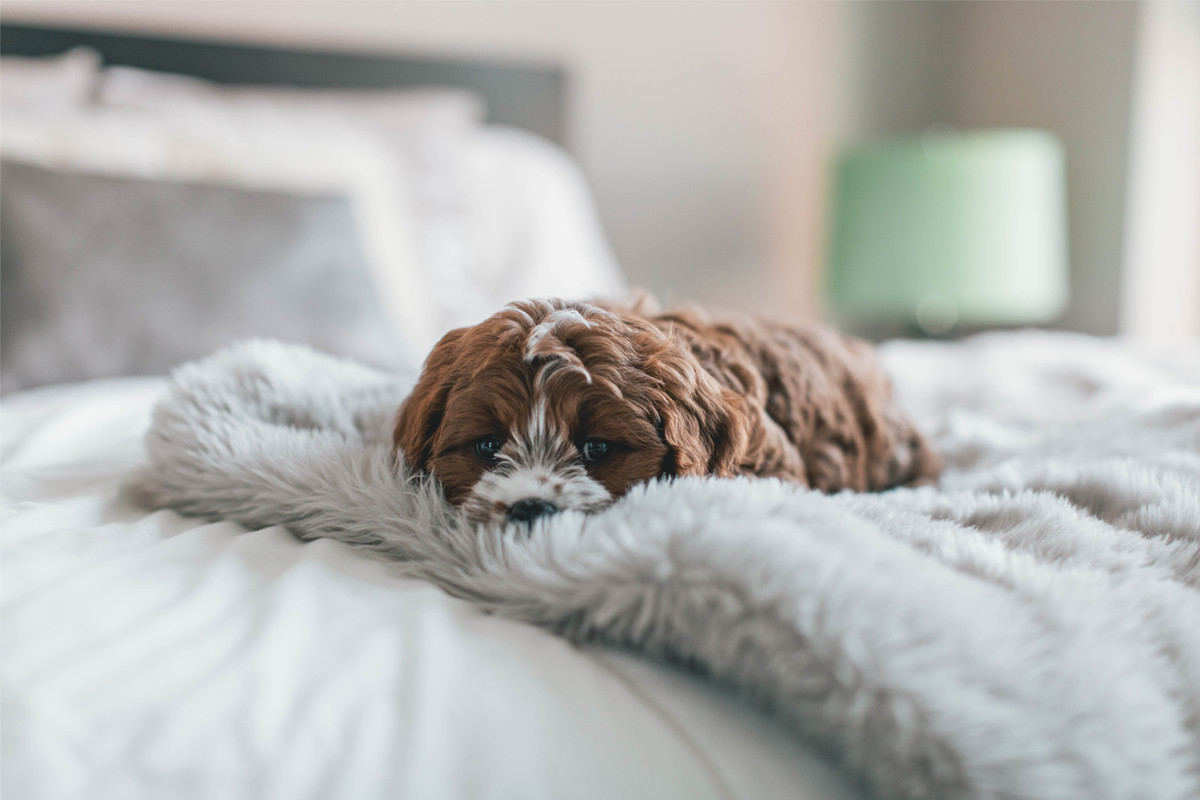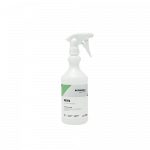Toilet Training Your Puppy
Unfortunately, your puppy wasn’t born knowing where they should relieve themself. No dog is! That’s why it’s your responsibility to teach them where they should and shouldn’t go.
It may not seem it at first, but toilet training your dog is an important step in forming a happy relationship with your dog. If not done properly you will find yourself cleaning up after them constantly, your carpets ruined and that constant smell lingering in your home. In many cases, dogs are given away to dog shelters because of issues associated with a lack of toilet training.
In the beginning, your puppy will have accidents inside, there’s no way around it. Having a natural, pet-safe product to get rid of stains and smells is handy for both of you. Messes will happen so you might as well be prepared. EcoShield Pets is completely safe for pets and will make sure you and your puppy have no reminders of those little accidents.
For small dogs and puppies, you can trial EcoShield Pets in a 750ml bottle.
For larger dogs a 4-litre container of EcoShield Pets is available.
Dog Psychology
Instinctively, dogs don’t relieve themselves where they live and sleep. So, your goal is to teach your puppy that your home is their home. It can take some time for your puppy to understand that your entire house is their home too.
Starting Small
To begin training, you need to control your puppy’s environment and be constantly supervising. Look out for signs that your puppy may need to relieve themselves, then take them outside. These signs can be:
- Lots of sniffing
- Circling
- Going close to the door leading outside
Start with your dog in one room or use barricades to section off just an area of a room so they can build the understanding that this area is their home too. Then as they understand that this room/area is their home, slowly introduce them to the rest of the house, keeping them under constant supervision.
Feeding your puppy on a consistent schedule really helps when toilet training your dog.
You Can’t Be Supervising 24 / 7
When you’re unable to supervise, a crate is ideal as a cosy home for your dog. Since crates are small in comparison to a room in your home, it’s easier for your puppy to understand that this is their home and won’t relieve themself inside the crate.
Their crate should start out being just big enough for your dog to comfortably move around but not big enough for them to take several steps in a row. The crate size can be increased after your puppy hasn’t relieved themself inside the crate for several days.
At night, place the crate near your bed. This will reduce your puppy’s anxiety and you will be able to hear them if they wake up and need to go to the toilet. Your dog will get restless and may even whimper.
Remember a crate is not a substitute for a dog sitter. With the exception of nighttime, your dog should never be asked to stay in their crate for more than a couple of hours. We advise learning how to properly crate train your puppy, there are great resources available online.
Work and Puppy Toilet Training
If you need to leave your home for several hours in the day it’s important to have an area in your home where toilet accidents are tolerable. Rooms with hard floors without carpets are best as they’re easiest to clean. Bathrooms or laundry areas are often a good choice as they can be sprayed with cleaner and washed down easily.
Before you leave, do your best to give your dog some age-appropriate exercise. If you can, come home for lunch and let them out and play with them for up to 30 minutes. If this is impractical, you might need to enlist the help of a friend, family member, dog walker or doggy daycare.

Taking Your Dog Outside
Generally, you should take your dog outside once an hour and take them outside immediately after your dog wakes up, after they’ve eaten and when you arrive home.
Be prepared to stay outside for 5 – 10 minutes. It’s okay if they don’t go each time but it’s important to give them the opportunity. You don’t want to distract your dog from relieving themself, so while you’re waiting, be boring, stand still and let them check out the environment.
When your dog finishes going that’s when you reward them. Yes! Good job! It’s as though toileting outside unlocks the most fun version of yourself, you can now reward them with a treat or a short play session. Creating these positive associations will make your puppy want to go outside to do their business.
When your dog goes outside, it’s not uncommon for them to have a burst of energy. It’s important that your puppy doesn’t start to learn that every time they go outside it’s really fun. Your dog needs to know that every time you’re taking them outside to go to the toilet, they have a job to do.
If your puppy hasn’t done their business after you’ve stood still and given them enough time, bring your dog back inside, put them in their crate and close the door for a couple of minutes. This will allow your dog’s energy and excitement levels to drop. Then take your dog back out of their crate, back outside and repeat the process.
How Will You Know When Your Puppy is Toilet Trained?
Good signs of your puppy being toilet trained are, your puppy goes one to two months with no accidents and can go several hours between toilet breaks. Remember that your dog can regress especially in the first year or if you move homes or if there are other major changes to their environment.
Caught in the Act!
You should never punish your dog by voice or actions when you catch them in the act of doing their business inside. This will only teach them that it’s bad to relieve themself when you’re watching them. They will just start hiding around the back of furniture to relieve themself without you seeing. If they relieve themself in your home, it’s your timing which is bad, not your puppy. Always reward them when they go outside and ignore them when they have an accident inside.
Once your puppy has been taken outside, clean up the mess and do your best to eliminate any odours so your dog or other dogs don’t mark the same place.
After Toilet Training
Congratulations on toilet training your puppy!
Your teaching, communication, time and effort has paid off.
As smart as your dog is, they will still accidentally create stains and odours for you to clean up. Whether it’s outside or inside, on tiles, concrete, wood or carpet, EcoShield Pets removes stains and odours harmlessly and effectively, so you and your dog can live in a safe and clean environment.


